28+ Sample Contractor Request For Proposal
-

General Contractor Request For Proposal
download now -
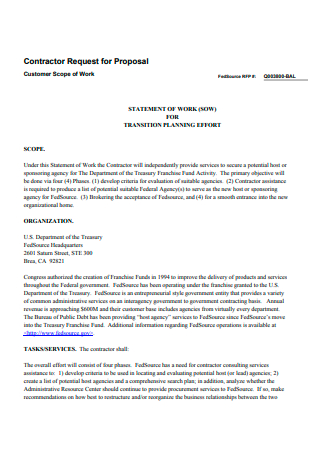
Contractor Request For Proposal Template
download now -
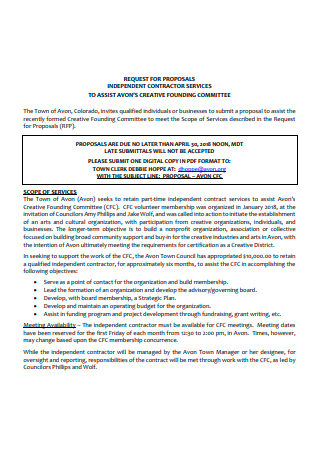
Independent Contractor Services Request For Proposal
download now -
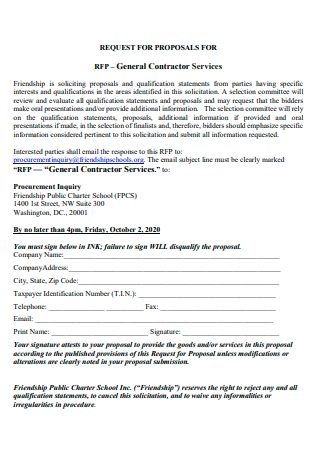
General Contractor Services Request For Proposal
download now -
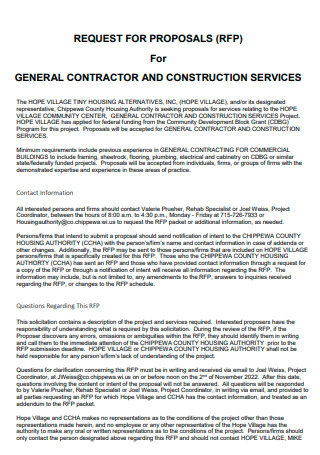
General Contractor and Construction Services Request For Proposal
download now -
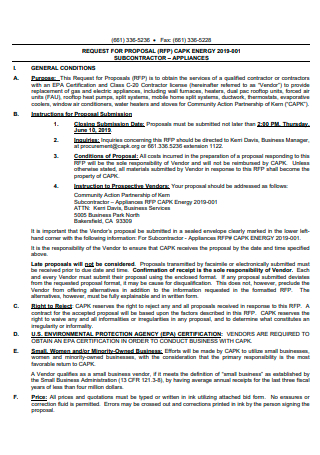
Sub Contractor Request For Proposal
download now -
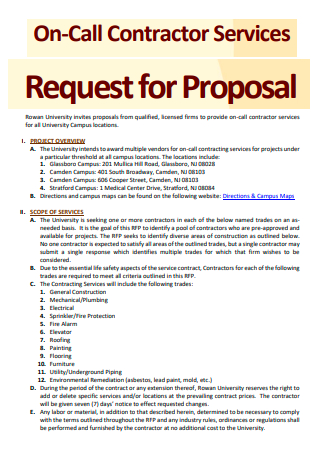
On-Call Contractor Services Request For Proposal
download now -
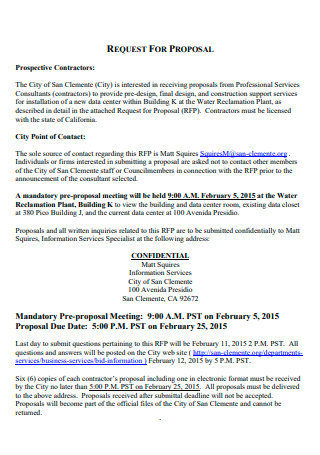
Prospective Contractor Request For Proposal
download now -
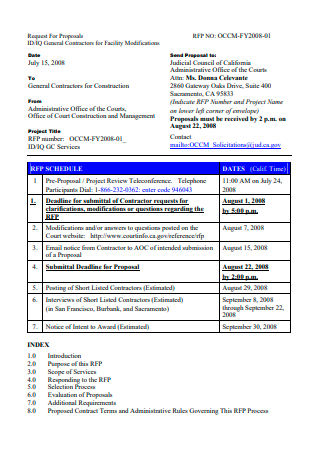
General Contractors For Facility Modifications Request For Proposal
download now -
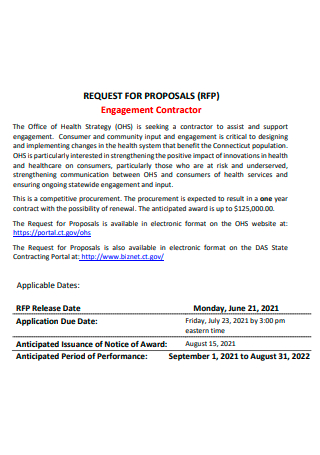
Engagement Contractor Request For Proposal
download now -
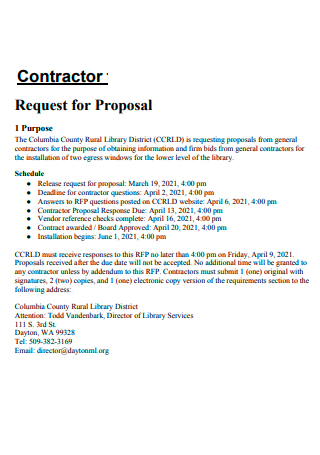
Contractor Request For Proposal Example
download now -
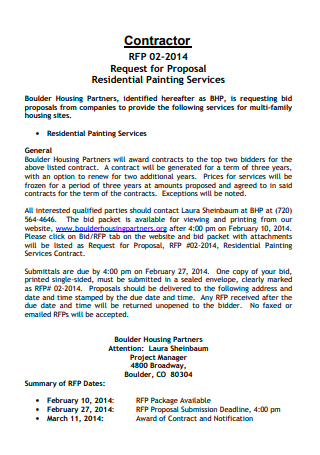
Residential Painting Services Contractor Request For Proposal
download now -
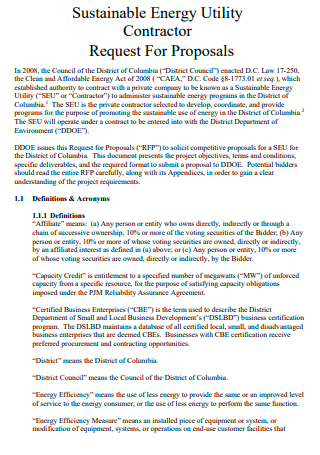
Sustainable Energy Utility Contractor Request For Proposal
download now -
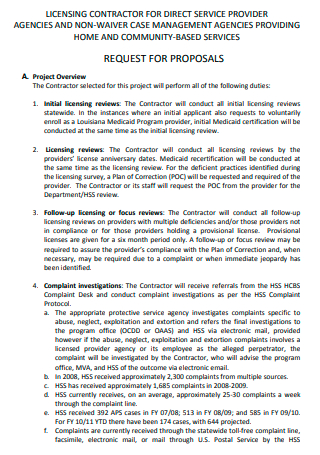
Licensing Contractor Request For Proposal
download now -
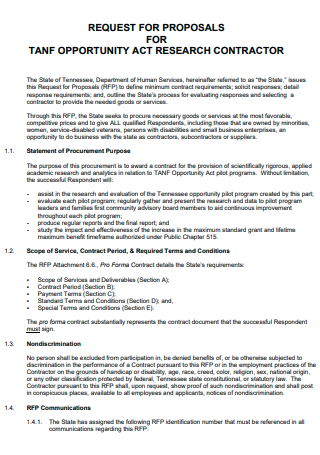
Opportunity Act Research Contractor Request For Proposal
download now -

Notice to Contractor Request For Proposal
download now -
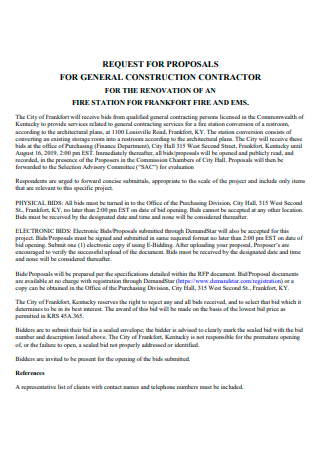
General Construction Contractor Request For Proposal
download now -
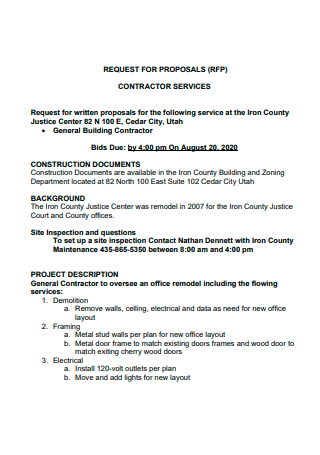
Contractor Services Request For Proposal
download now -
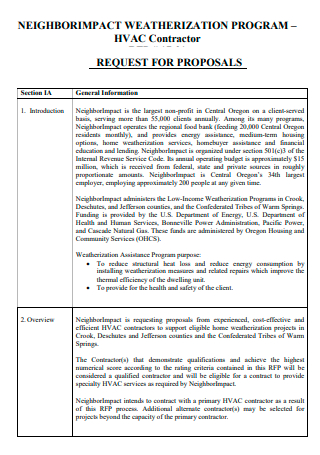
Program Contractor Request For Proposal
download now -

Basic Contractor Request For Proposal
download now -

Simple Contractor Request For Proposal
download now -
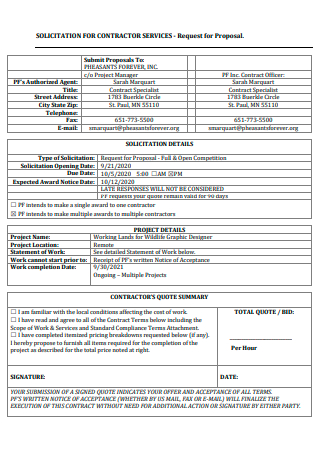
Solicitation For Contractor Services Request For Proposal
download now -
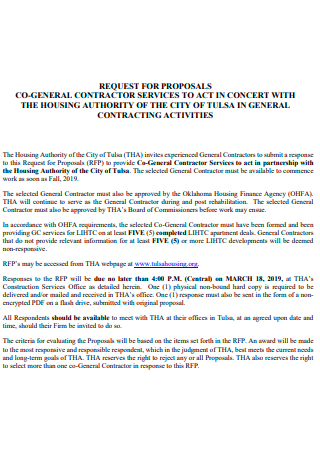
Co-General Contractor Services Request For Proposal
download now -
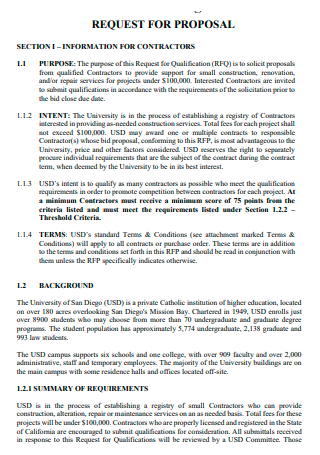
Contractor Request For Proposal in PDF
download now -
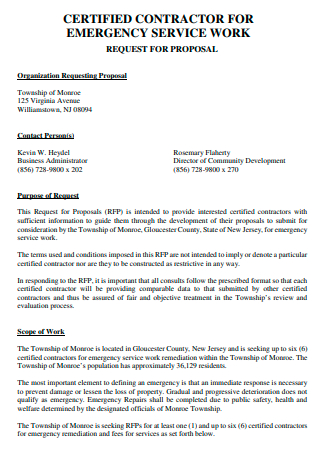
Certified Contractor Request For Proposal
download now -
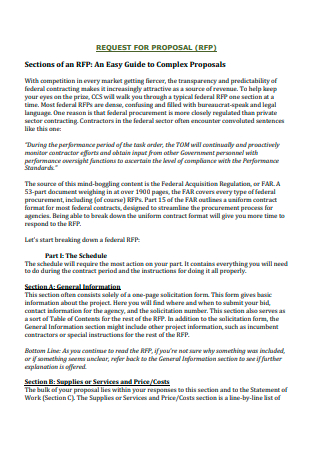
Printable Contractor Request For Proposal
download now -

Anchor Contractor Request For Proposal
download now -
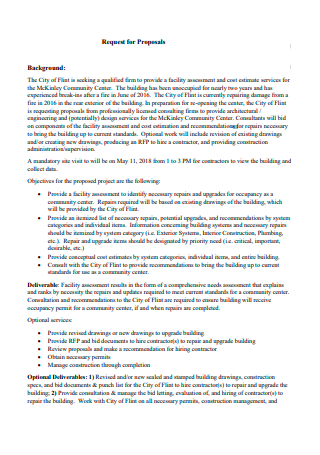
Standard Contractor Request For Proposal
download now -
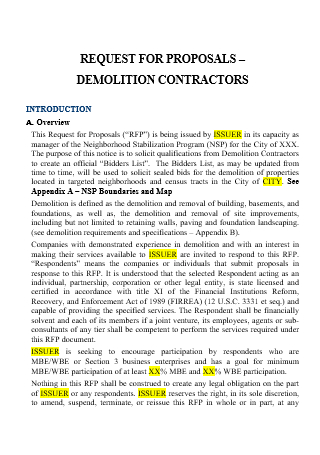
Demolition Contractor Request For Proposal
download now
FREE Contractor Request for Proposal s to Download
28+ Sample Contractor Request For Proposal
What is a Contractor Request for Proposal?
Tips on Contractor Request for Proposal
How to Write a Contractor Request for Proposal
FAQs
What is the benefit of a contractor request for proposal?
What is the difference between an RFP, RFQ, and RFI?
What is a Contractor Request for Proposal?
A contractor request for proposal is a document that the government and private corporations send to contractors to announce a project that they are about to make, summoning the contractors to make a bid to work for the project. Through the RFP (Request for Proposal), the government and corporations will get the right match for the work that has to be done. They can find the perfect vendor through it. Because they will ask for bids, many contractors will respond to the call and they can choose the best worker among them. They will also find the best bid that can contain the best price, best timeline, and best scope of work for the project.
An RFP letter is a good invitation to every general contractor to show that they are skilled in doing the work that is needed. The RFP process is simple. The government and corporations will have to announce the upcoming project and all contractors who will be interested to work on the project will submit a bid. Then they will choose among the contractors who will be the best for the project. But without an RFP, the corporations may not get the most skilled worker for the project. This is a great way how they can make good contractors come out to the surface. It will be a great chance for the contractors to deal with corporations.
The procurement of an RFP is not a hard thing to do. The government and corporations just have to detail the work that has to be done so that they can get the right contractors to bid for the project. They will send the RFP to every contractor’s office. Then, they can get an RFP response immediately. It will be useful to use an RFP template so that they can create an attractive request. A template may have a good design that can enhance the letter. As an RFP outlines the needs of your company, it has some essential components. They are the following:
- The description of your company
- The problem statement about the things that you want to solve
- The challenges that may come your way
- The deliverables which will be the products and services of the contractors
- The timetable with all the deadlines for the project
- The criteria on how you will choose a contractor
- The request to contractors to give references
- A format that contractors can use for the proposals that they will send to your company
- The information on how you can be contacted by the contractors
- The deadline for all the contractors to submit a proposal
Tips on Contractor Request for Proposal
After knowing the sections of the RFP, you may want to have some tips that you can use in writing this document. Maybe you will want to see a request for proposal sample. You know that a request for proposals helps the organization decide which contractor to use. And you want to send the best RFP so that you can get the best contractor with the best proposal sample letter. Sending a request for proposal before a contractor presents an offer is an important thing. So, to be sure that you can send the best RFP, we have provided some tips for you. Consider the following:
How to Write a Contractor Request for Proposal
Do you need a contractor request for proposal template? Do you need it because you are about to create a contractor request for proposal? Well, stop looking for and consider the steps that we have prepared for you in creating an RFP. Read the following:
1. Detail the Needs of the Project
The main thing that you have to do in the RFP is to detail the project that you are going to have. Be direct about what you need regarding deliverables, timeline, deadlines, and everything. You should give the best description of the project so the contractors will understand the definite scope of the project. You must identify all the needs of your organization. This is the only way how you can get what you are looking for.
2. Create an Executive Summary
If you have a large project, your proposal must be sure to be lengthy. In times like this, you should need an executive summary that can give an overview of the project. Give a summary of the description of the project. In the executive summary, be direct about the things that you need.
3. Search for Qualifications
The contractors that you should get must be qualified. To ensure this, you should state the qualifications that you are looking for. This will prevent unqualified contractors to bid on you. You will only get the best contractor’s bid. You can also state the character of the contractors that you are looking for. In this way, you can have a contractor who is easy to deal with.
4. Set a Budget
After stating the qualifications that you need, you must state a budget for the project. Through this, you can encourage contractors to bid for the project. Especially, if you have a large budget. On the other hand, if your budget is minimal, the contractors will be aware of the only budget that you can give.
5. Transparent Selection Process
You must be able to say that you will only hire the best contractor and will disqualify all others. Through this, the contractors will know the odds of their bids. Be transparent to them so that they will know how to respond to the RFP. Through that, they can give the best RFP response to you.
6. Give Timelines
Provide a timetable for the project. You must state all the deadlines that you need for the project. This is how the contractors will know if they have the availability to do the project. They will know if they are qualified to do the project in time or not.
7. Format the RFP
After having all the sections of the RFP, it is time for you to format it. Use the best format for your document. To have the best format, you can refer to templates so that you can have the idea of a good RFP format. Search on the internet and choose templates that are according to your taste of professionality. After having a good format for your RFP, you can send it to the contractors’ office and find the best contractor for your project.
FAQs
What is the benefit of a contractor request for proposal?
The benefit of a contractor request for proposal is that you may be able to get the best contractor for your project. You will have the chance to choose among many contractors that will respond to your RFP. Through it, you can find the perfect contractor.
What is the difference between an RFP, RFQ, and RFI?
An RFP (Request for Proposal) is the announcement of a project to solicit proposals or bids for it. An RFQ (Request for Quotation) is sent to suppliers to bid to give their products and services, meeting a specific quantity that is needed by the company. An RFI (Request for Information) is a document that solicits suppliers to give information about their products and services.
To get the best contractor for your project, you must create an RFP that will summon contractors to bid for your project. This is a good process of how you can find the perfect contractor. So, when you have a project, be apt to send an RFP first. Now, do you need a template for a contractor request for proposal? This post has 28+ SAMPLE Contractor Request for Proposal in PDF | MS Word. You can have any that you will think will suit your purpose. What are you waiting for? Download now!
